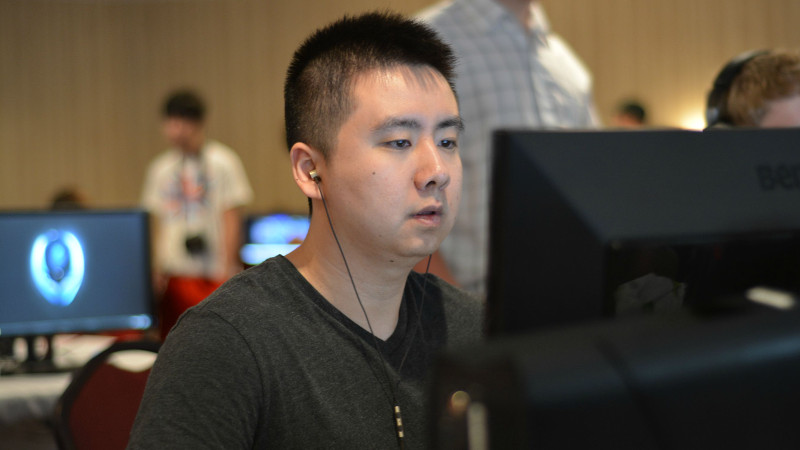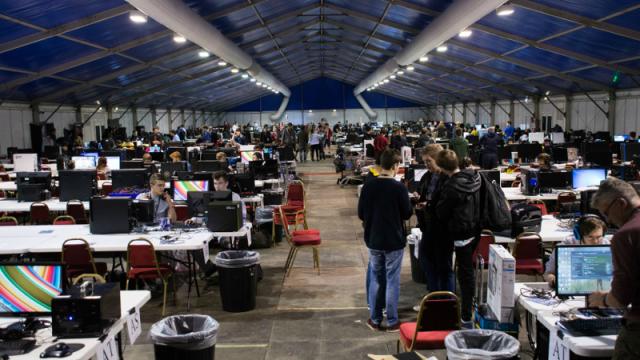At first glance, Team Fortress 2 has a lot of the things that make a successful competitive game. A ton of people play it, consistently making it one of the top games on Steam going on a decade. It’s got a distinctive and charming art style that sets it apart from most other major FPS games. Perhaps most importantly, it’s an incredibly easy game to learn, but it possesses a high skill ceiling ideal for showcasing professional-level talent.
All of these factors have made Team Fortress 2 the best competitive shooter that nobody cares about. While top CS:GO teams routinely compete for nearly six-figure grand prizes, the best TF2 teams in the world compete for a few thousand dollars. World championship TF2 finals struggle to break ten thousand viewers.
However, with a matchmaking beta just around the corner, competitive TF2 has a chance to reinvent itself for a wider audience. But is it too late to save pro TF2 from esports obscurity? Will Valve have to destroy the pro game in order to save it?
According to Josh “Sideshow” Wilkinson, the problem competitive TF2 has always had compared to classic esports games like Counter-Strike is that there is very little overlap between the TF2 that most people play and the game that the pro community has tried to promote. Wilkinson has been deeply invested in TF for years: he plays on Europe’s Full Tilt team, and he’s worked as an organiser and caster as well.
“Counter-Strike has always been a competitive game,” Wilkinson explains. “TF2 has never been like that. If you ask anyone who has just vaguely heard of the game, then it’s very much a casual game. It was marketed as a casual shooter… and when you pick it up as a new player, you don’t even get a hint of it being competitive.”
Competitive TF2 has always wrestled with this core identity crisis. If you play CS:GO casually online, it is still recognisably the same game that you see Fnatic and Na’Vi playing at an ESL major. But if you play TF2 casually, chances are it’s a game about two dozen cartoon arseholes murdering each other around a mine cart with a Wile E. Coyote bomb strapped to it.
The pro game, on the other hand, is a fairly regimented 6v6 shooter with strict limits on classes and game modes that make it very different from the game that’s so popular on Steam. It’s basketball or hockey next to TF2’s Calvinball, and most Team Fortress players have never even tried it.
Which is why competitive matchmaking is a huge deal for Team Fortress 2. A North American TF2 pro who was part of a group of community leaders who visited Valve recently, Carl “Enigma” Yangsheng, says, “Matchmaking is the single most important thing Valve can do for the competitive community because it addresses the root problem: accessibility.”

Carl “Enigma” Yangsheng competing at an ESEA event, by Austen “Tagg” Wade. Source
Right now when you launch TF2, there is nothing there that would even suggest the existence of a competitive version of the game. Even if players are curious and motivated to try it, a newcomer encounters a baffling array of obstacles.
“Because some standard is necessary for competition, the competitive community experimented with different formats and settled on 6v6. [But] the barrier of entry is immense. For a typical player to actually play a 6v6 game, he or she must first somehow discover outside the actual game through unofficial channels that others are playing the game in a 6v6 format,” Yangsheng explains. Then they have to “find resources on how to learn to play the 6v6 format and gather a group of friends to play the 6v6 format or discover a third-party pseudo-making service.”
Matchmaking could fix all of that in one stroke. But it might also jeopardize the game that the pro scene has been playing for the past several years.
“I don’t think most competitive players have wrapped their heads around this, but [competitive matchmaking] definitely means compromising what we consider the competitive integrity of 6v6,” Wilkinson says. “Because it’s been proved, over the past 7 years, that what we consider a great competitive game does not appeal to the casual players of TF2, even when you give them ample opportunity to get involved.”
While Valve appear to be accepting the 6v6 standard, that’s only the beginning of making TF2 into an adequate competitive shooter. Because there are so many classes in TF2, each with a wide variety of possible weapon and item builds, the shooter has become a balance nightmare.
Most leagues get around this by creating “whitelists” of permitted weapons and items and by enforcing limits on how many of each character class are allowed onto the battlefield. But this has also led to different rules and standards for what constitutes competitive TF2. Each step in that direction, however, further divorces the competitive game from what casual players enjoy. Competitive matchmaking will impose new standards, which could solve some of the confusion, but at the cost of breaking the painstaking balance the community created in favour of Team Fortress 2’s abject chaos.
“So that’s the first dilemma: the whitelist, and how you want to solve that dilemma. And I don’t think it’s particularly solvable,” Wilkinson says. “Even if they balance it as well as they possibly can… it’s a fundamental flaw with the game.”
In the name of making competitive TF2 accessible to the broader community, it’s likely that the competitive community will watch a lot of the barriers they have painstakingly erected around the game’s internal contradictions get washed away. It might just be a phase. With time, Valve and the game’s players could find the right compromise between casual and professional TF2. But it will be a culture shock to the established competitive scene.
It’s a necessary step, however, to close the gap between TF2’s competitive and casual communities and make the competitive game popular. With the ongoing mainstream embrace of esports, and the arrival of popular new games that are clearly taking their cues from Valve’s groundbreaking class-based shooter, Team Fortress 2 has been a giant missed opportunity for years. Now, at long last, Valve might be about to fix that.
“There are a lot of people in the TF2 community who think this is way too late. Who think the glory days of TF2 have long passed, and nobody can be bothered with reviving it. It’s too late for all of this,” Wilkinson says. But years of labouring in relative obscurity have allowed TF2’s under-appreciated esports community to create an infrastructure and knowledge-base capable of serving a larger, more casual audience.
“[Which should] maximise the benefits that matchmaking will bring,” he says. “So I think there’s never been a better time for the casual side to get introduced to competitive [Team Fortress 2] than right now.”
Top Photo: The players’ area at Insomnia 55 LAN, by Austen “Tagg” Wade. Source

Comments
One response to “Competitive Matchmaking May Rescue Team Fortress 2 From Esports Oblivion”
Solid write up, I appreciate that you actually talked to/quoted some of the pro players and didn’t just copy information Valve put in their announcement of the competitive matchmaking beta. I think the article could have been improved by acknowledging the existence of formats other than 6s, such as Highlander (9v9), Ultiduo (2v2 soldier and medic) and 4s, highlander in particular as it’s much closer to the average pub game but is likely not to be implemented (at least not yet) for the difficulty with matchmaking a team of nine. Props for including pictures of (and taken by) pro players too as well as getting a European and North American representative (in future it’d be amazing if you could get a representative for the Asia Fortress and Ozfortress communities as well), this has certainly been the best article I’ve seen on matchmaking outside of the ones on teamfortress.tv, nice work. Shame the grand final you linked was by far the most disappointing match of both that tournament and all of the previous Insomnia series lans which were all incredible for the most part.